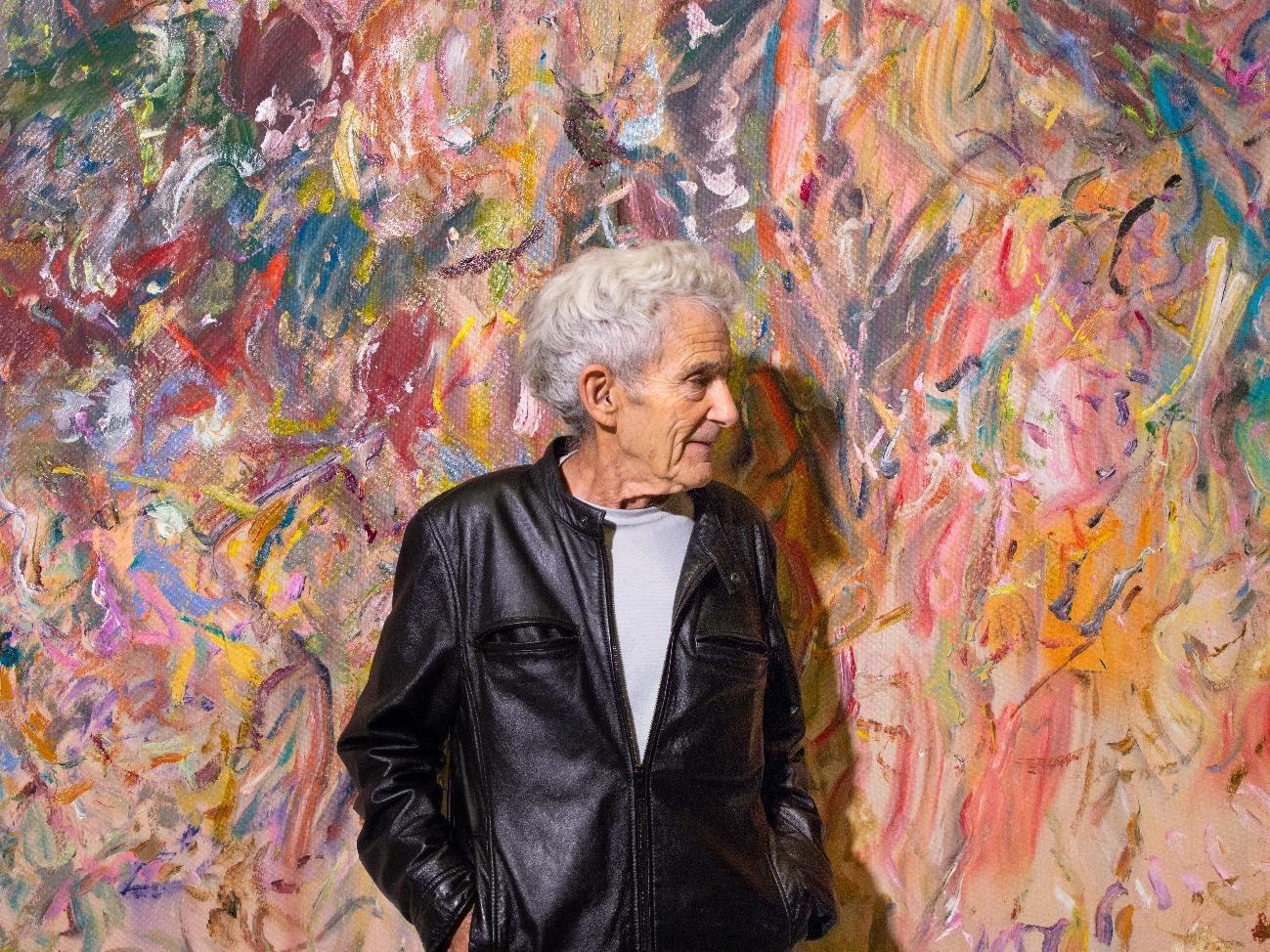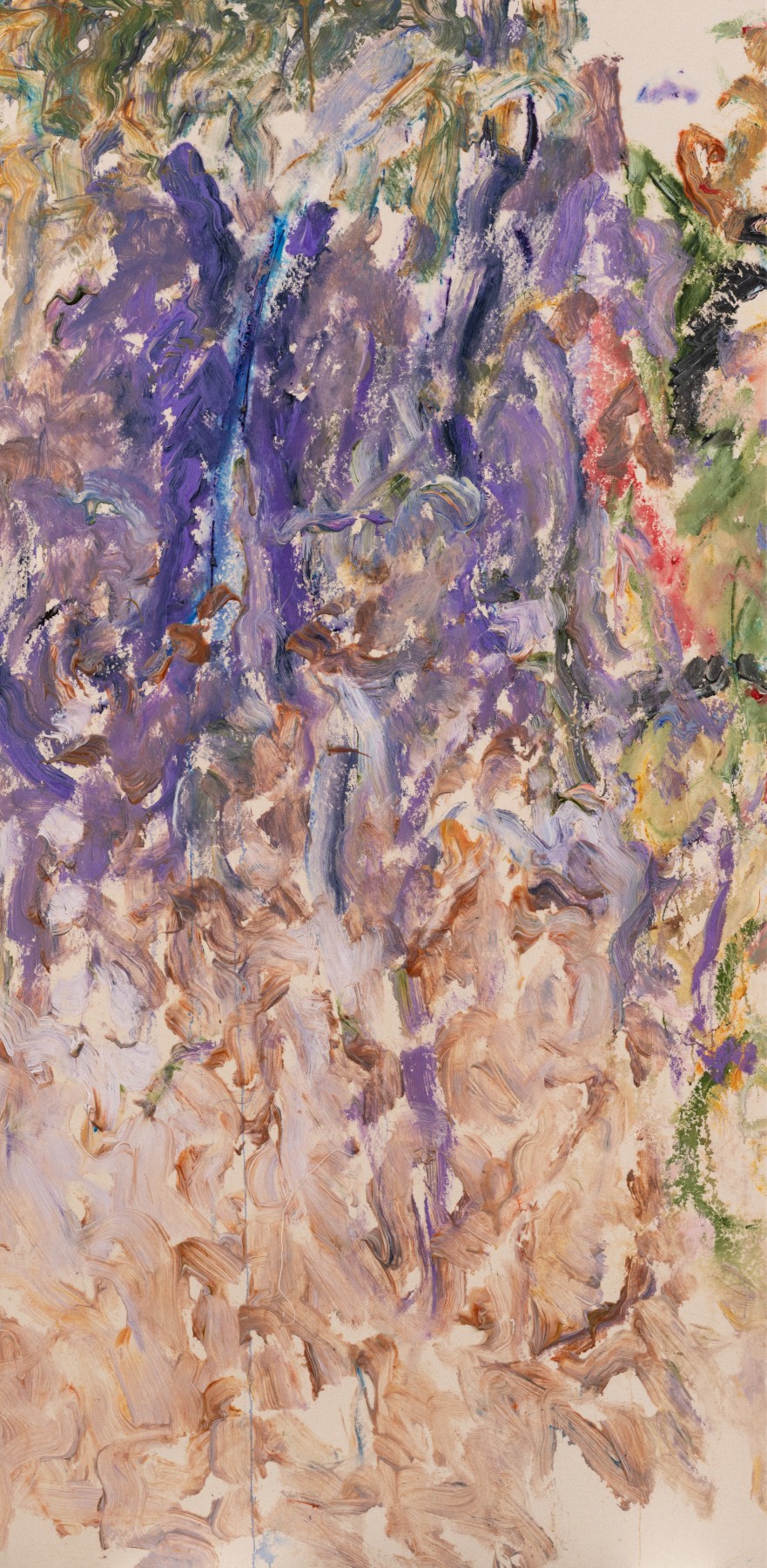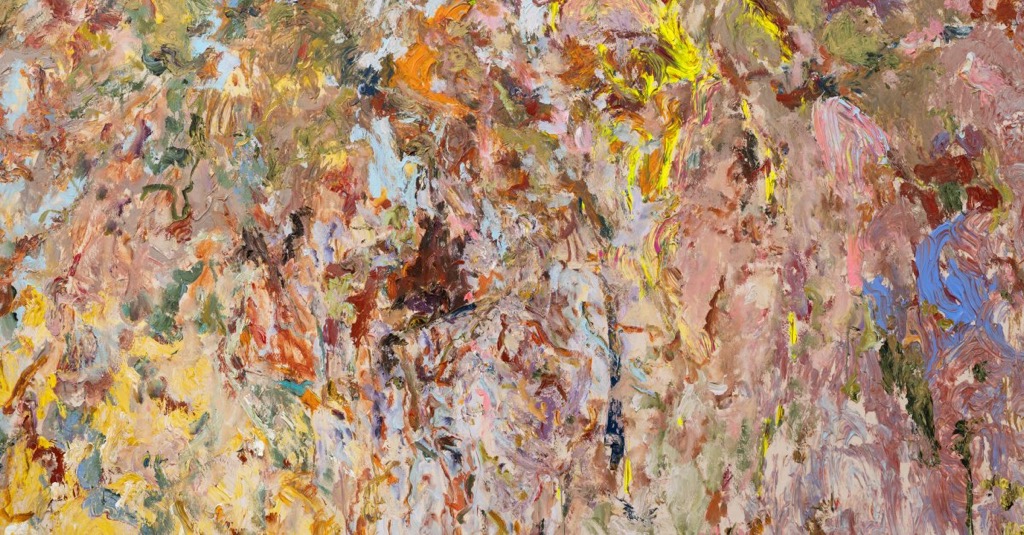Larry Poons: The Grace of Falling


In the lead-up to Creations of Sound, Larry Poons’ exhibition at Wetterling Gallery in Stockholm, before heading into our interview, I was warned, “He has a personality that is… complex.” It was the kind of preface that both excites and terrifies a journalist. Ironically, I had already brought a Swedish Princess cake for him as it had just been his 88th birthday—a small peace offering before the plunge.
When I asked about the driving force behind the many shifts in his artistry, Poons cut me off, this was a question not worthy of an answer: “What do you mean? What do you think?”
For a moment, I froze. But the tension wasn’t hostility; it was precision. Poons doesn’t entertain vagueness because his life’s work has been about chasing specificity: the kind that lives inside failure, accident, and time. “Define a thing and you lose it,” he continues.
Born in Tokyo in 1937 and raised in the U.S., Larry Poons first studied at the New England Conservatory of Music before transferring to the School of the Museum of Fine Arts in Boston. Music was supposed to be his career, but painting offered something freer. In the early 1960s, he joined New York’s avant-garde, showing with Leo Castelli and gaining fame for his “dot paintings” — vibrating optical fields that seemed to shimmer off the wall. By the 1970s, he abandoned geometry for turbulence, pouring and throwing paint in unruly storms. Critics were baffled. Poons didn’t care. Each phase, he insists, wasn’t planned but discovered: “You do what you do if you want to paint.”
Wetterling Gallery, founded by Björn Wetterling—the man who brought Frank Stella and Robert Rauschenberg to Stockholm—has a long history of championing American visionaries. Wetterling first noticed Poons’ work back in the 1980s and, decades later, sought him out again; when he proposed a show, Poons simply said, “Sure.”

His new exhibition, Creations of Sound, feels less like a culmination than a continuation, a conversation with the limits of control. Vast canvases hum with near-misses, rescues, and revisions. At eighty-eight, Poons still paints as if every mark could fail. “A painting’s never finished,” he says. “You just stop before you ruin it. And even then, you probably already have.”
When I mention the word process, he waves it off. “There’s no process. That word doesn’t mean a damn thing anymore. You need a pencil and paper — that’s the beginning and end of the process.”
Poons’ early training as a musician runs through everything he does. His paintings pulse with rhythm and improvisation, each gesture like a note that almost lands, almost breaks. In Creations of Sound the canvases function as visual jazz—dissonant, unresolved, stubbornly alive. He isn’t chasing beauty, he’s chasing truth. “You don’t find truth by aiming for it,” he tells me. “You find it when you stop pretending you’re in control.” “When you miss a note,” he says, “you’re reminded you’re alive. Perfection is dead. You can’t breathe in it.”
When I ask about the role accident plays into his artistry, he doesn’t hesitate. “It’s all a fucking accident. The first mark you put down is already an accident. A painting’s just a whole bunch of mistakes. If you’re lucky, interesting ones.” In an age obsessed with polish and perfection, Poons’ belief in imperfection feels radical. His work insists that failure isn’t an obstacle to creation — it is creation. You don’t discover anything new by repeating what you know. The experiment fails until it doesn’t and even then, it’s probably still failing in a more interesting way.

Over the decades, Poons has outlasted every movement that tried to claim him—Op, Pop, Minimalism, Neo-Expressionism—and still refuses to fit in. He raced motorcycles in the 1970s, taught at Bennington College, and watched younger painters rediscover his work with awe.
We talk briefly about the current art world: funding cuts, censorship, and “cancel culture.” He shrugs. “It’s always been difficult. Government cuts and censorship are not new. If I waited for perfect conditions, I’d never paint.” Standing among his canvases, I sense the tension between mastery and mess, intention and accident. The surfaces are thick with time, paint crusted, layered, scraped away. They wear their history like scars.
To still paint this way at nearly ninety—to still risk failure—feels like rebellion against reputation. Poons could rest on his laurels, but he keeps tumbling forward, refusing to congeal into myth. “I’m not trying to prove I can paint,” he says. “I’m trying to see what happens when I forget how.”
When I finally hand over the Princess cake, Poons grins, suspicious at first, then amused. “You brought this? For me?” he asks, glancing at me,” he mutters, already peeling back the box. For a moment, the edge softens. The contrarian melts into a man delighted by sugar and surprise.
Creations of Sound reminds us that art’s vitality lies not in perfection but in persistence. Poons’ work, raw and riotous, argues for failure as a kind of faith in the belief that falling short is the only honest way to touch something true. Maybe that’s what the publicist meant by “complex personality.” Not difficulty, but depth.
In the end, Poons doesn’t want your admiration. He wants the risk. The missed note. The bruise of the attempt. The gallery’s booklet is aptly titled: Who the fuck is Larry Poons? Rest assured, he is still a trailblazer, contrarian, and the painter who refused to fossilize.
Creations of Sound on view until November 15, 2025 Wetterling Gallery, Kungsträdgården 3, Stockholm, Sweden. The gallery is hosting a screening of the documentary The Price of Everything on Wednesday, October 16 at 5 PM.
.
What's Your Reaction?
Jalane Jote is a journalist and interdisciplinary artist with a background in International Relations & Documentary Film.

